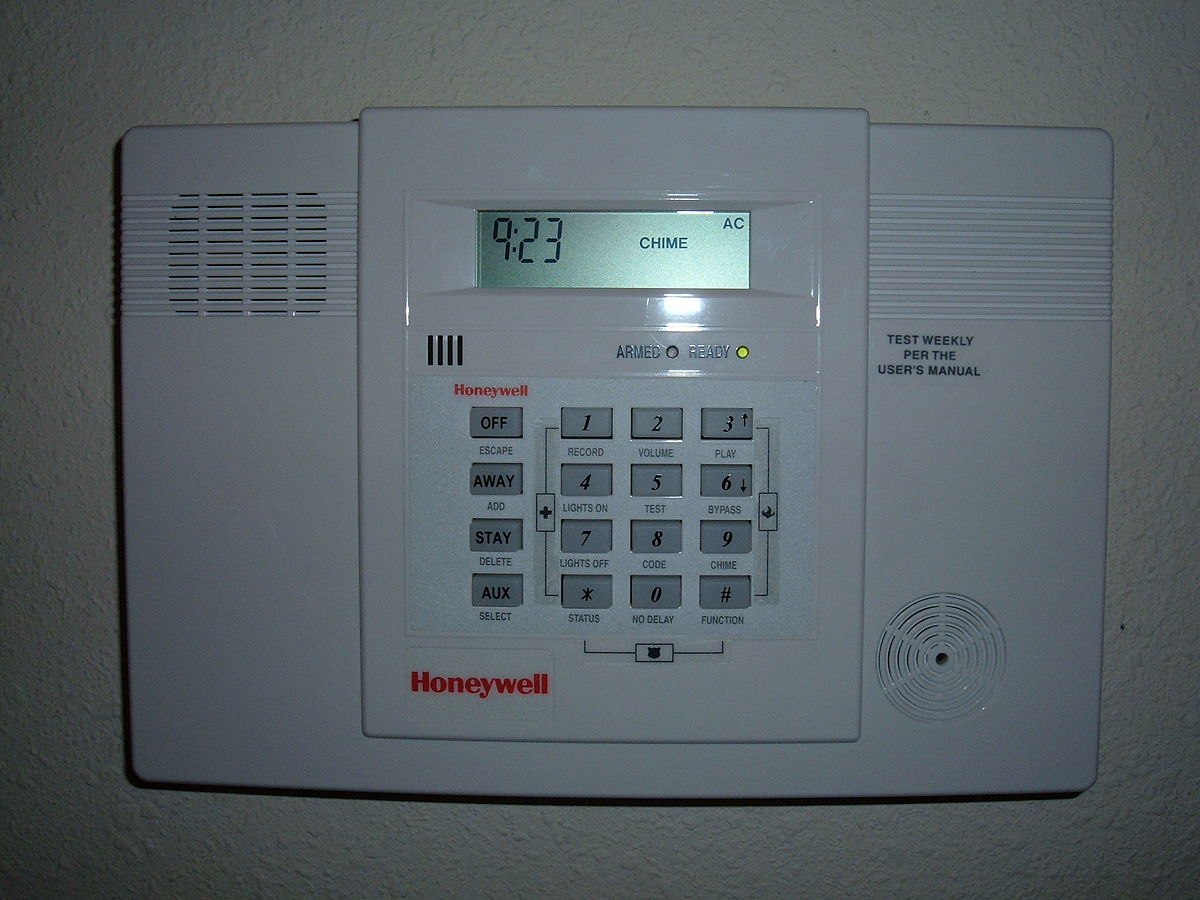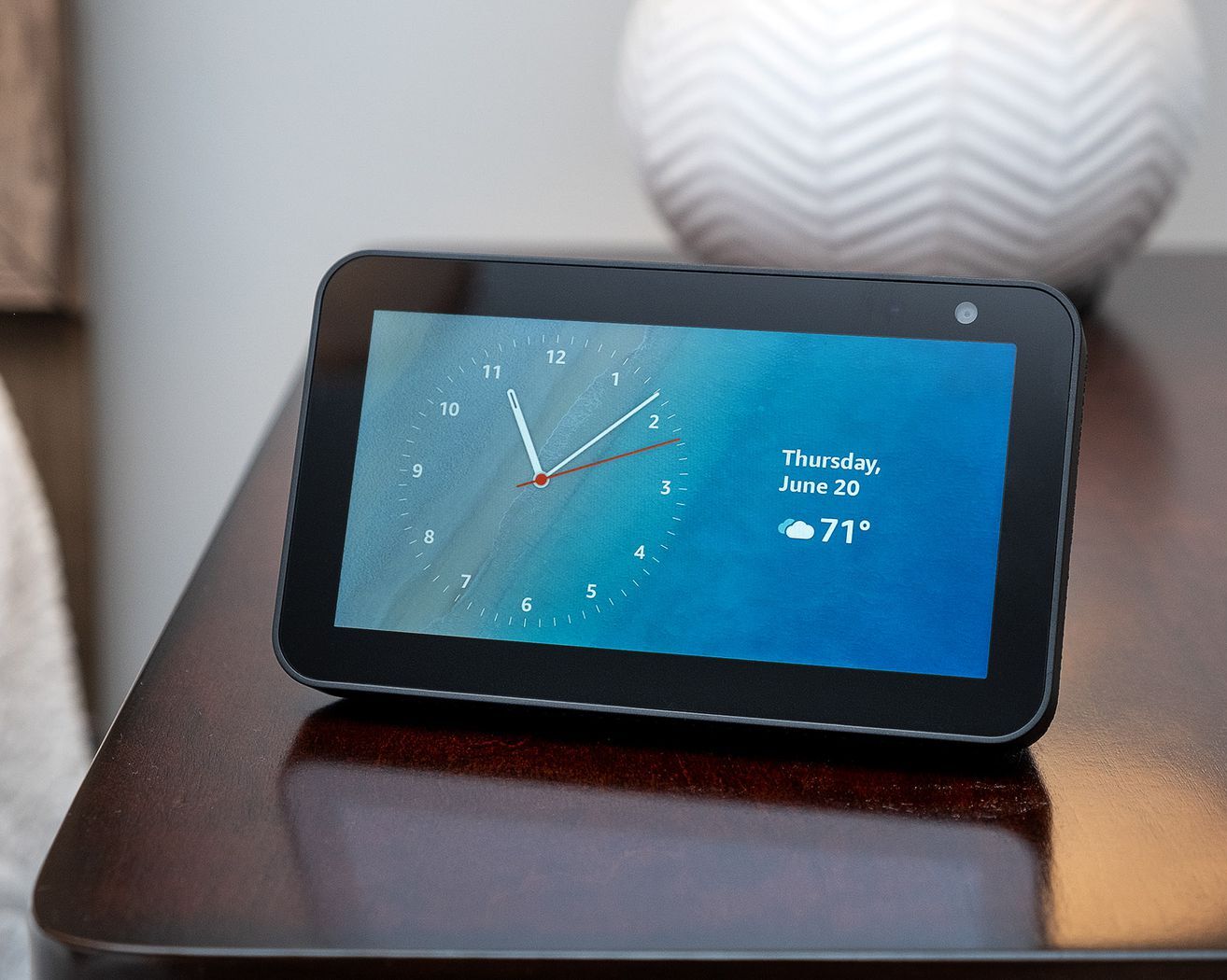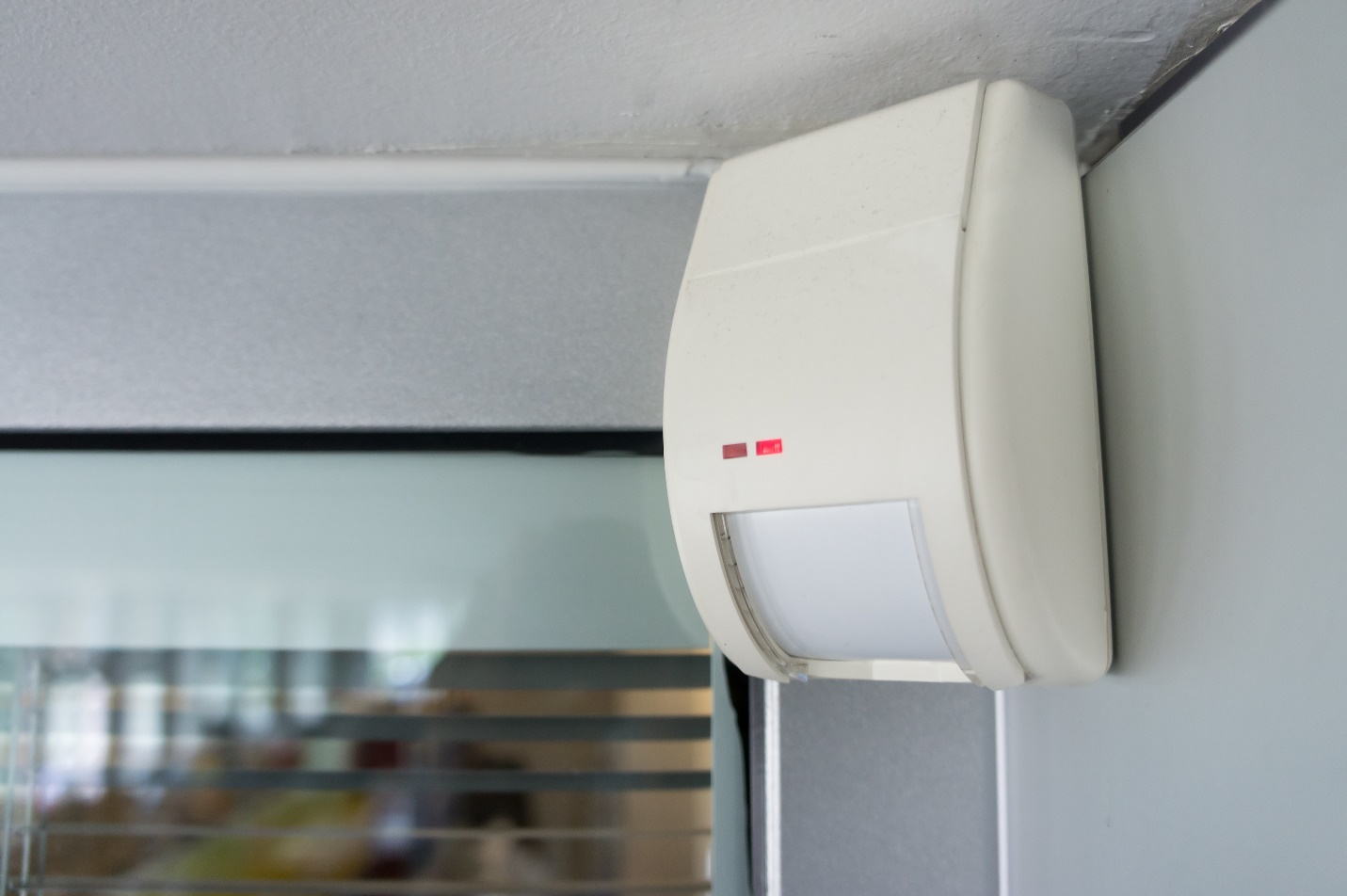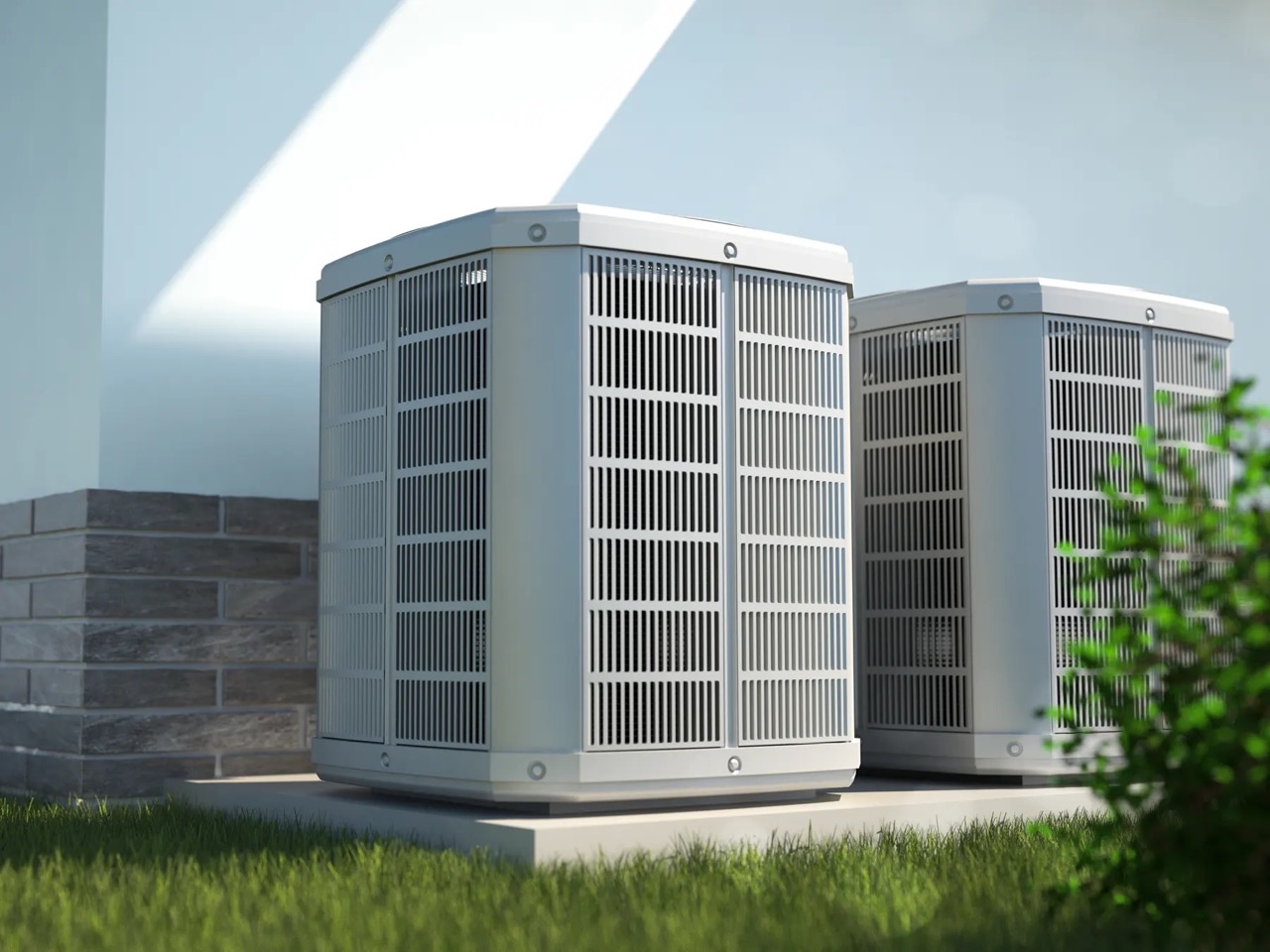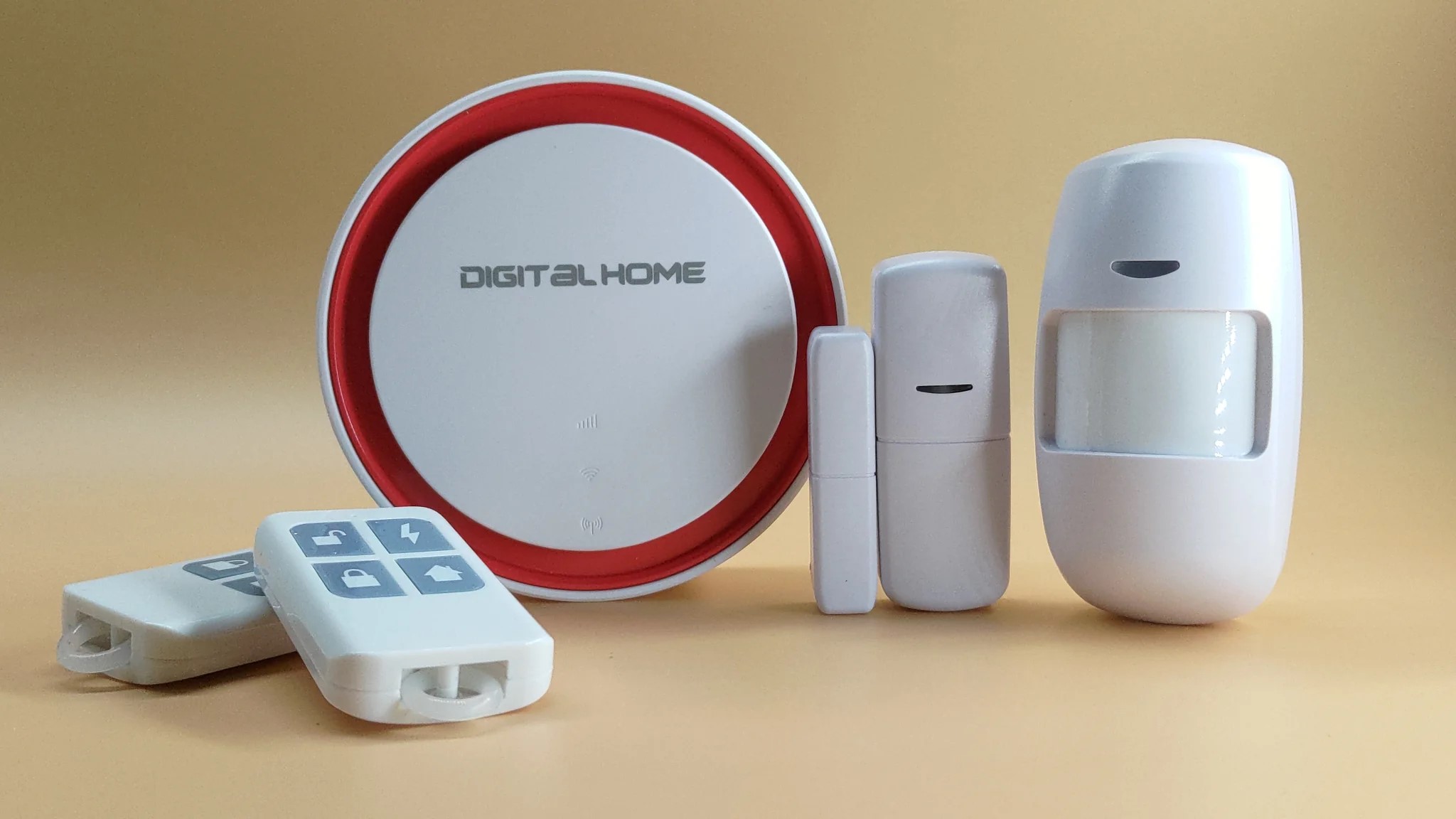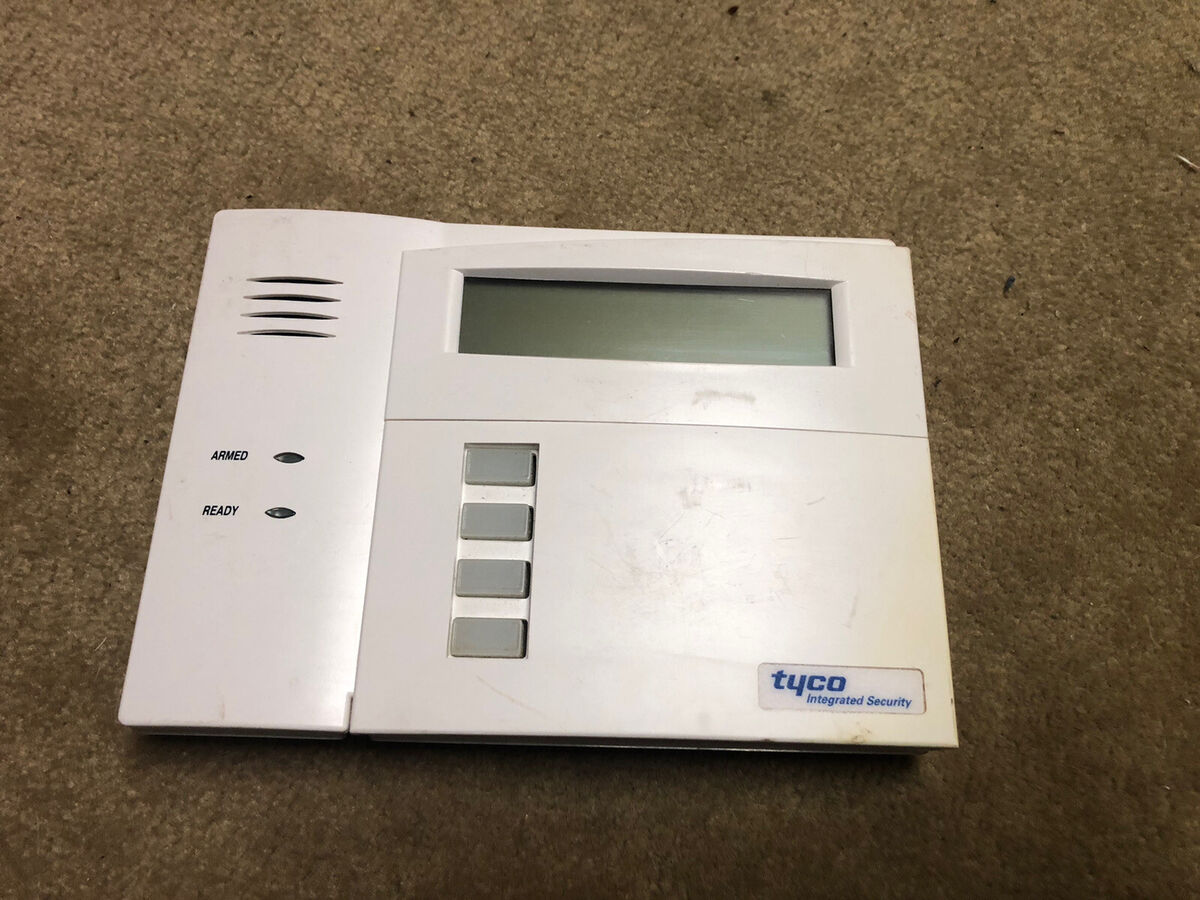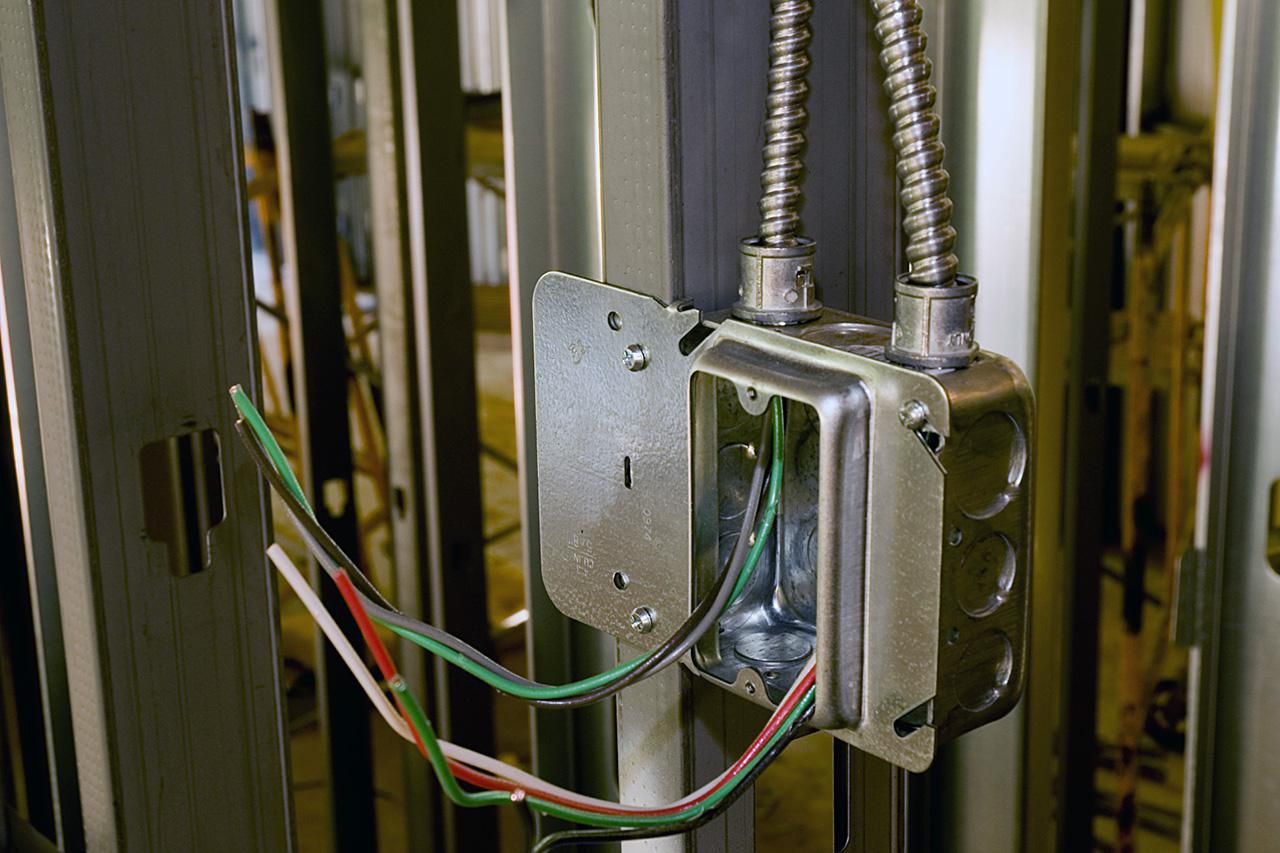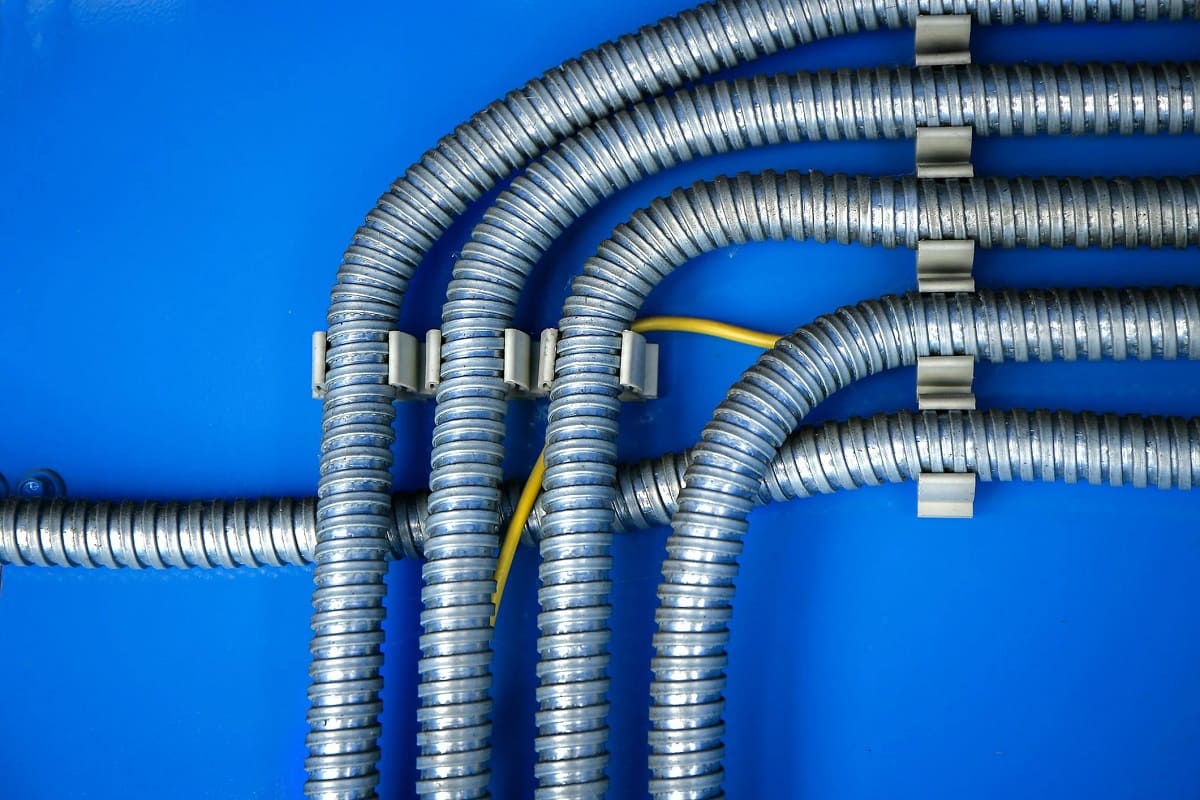Home>Home Security and Surveillance>Why Are Magnets Used In Alarm Systems
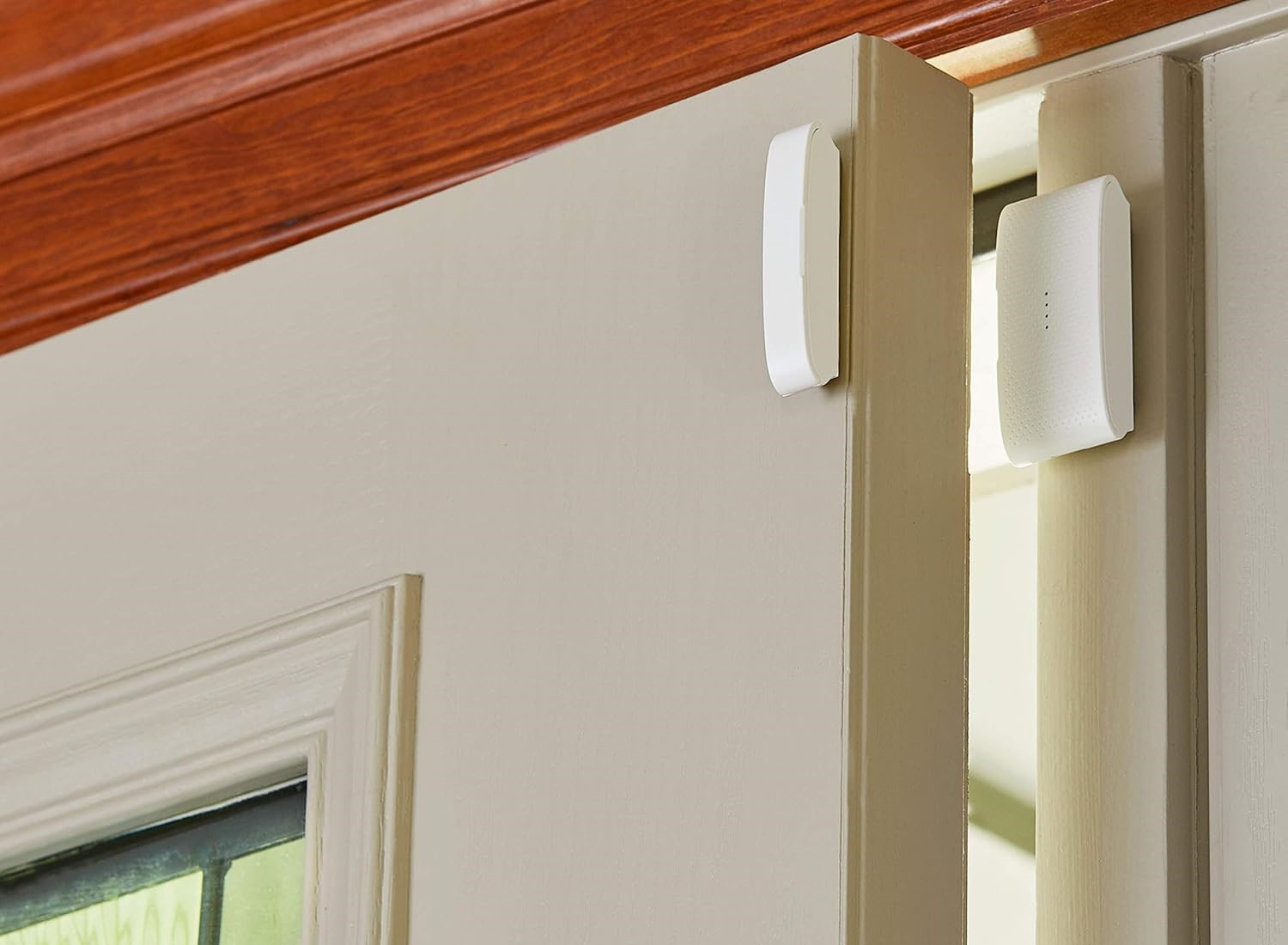

Home Security and Surveillance
Why Are Magnets Used In Alarm Systems
Modified: March 6, 2024
Learn why magnets are crucial in alarm systems for home security and surveillance. Discover their role in enhancing protection and peace of mind.
(Many of the links in this article redirect to a specific reviewed product. Your purchase of these products through affiliate links helps to generate commission for Storables.com, at no extra cost. Learn more)
Introduction
Welcome to the world of home security and surveillance! In an increasingly unpredictable world, it’s crucial to keep our homes and loved ones safe. That’s where alarm systems come in. These comprehensive security measures provide peace of mind and act as a deterrent to potential intruders.
One crucial component of alarm systems that often goes unnoticed is the use of magnets. Yes, magnets play a significant role in ensuring the effectiveness and reliability of these systems. But why are magnets used in alarm systems? How do they work? And what benefits do they offer? In this article, we’ll delve into the fascinating world of magnetic contacts in alarm systems.
Before we dive into the specifics of magnets, let’s first understand the basics of alarm systems. At its core, an alarm system is designed to detect unauthorized entry into a premises and trigger an alarm, alerting the homeowners or a security monitoring service.
An alarm system typically consists of various interconnected components, including sensors, control panels, and alarm devices. These components work together to create a layered security approach, ensuring that any breach or intrusion is detected and responded to promptly.
Now, let’s explore how magnets are integrated into alarm systems and their role in enhancing security.
Key Takeaways:
- Magnets in alarm systems provide reliable and quick detection of unauthorized access, ensuring homes and businesses stay secure and protected.
- Regular maintenance and proper installation of magnetic contacts are essential to address potential challenges and maximize the effectiveness of alarm systems.
The Basics of Alarm Systems
Alarm systems are designed to provide comprehensive security for homes and businesses. They operate on the principle of detecting and responding to unauthorized entry or potential threats. To understand the use of magnets in alarm systems, it’s essential to have a basic understanding of how these systems work.
Alarm systems consist of several interconnected components that work together seamlessly to provide a robust security solution. The primary components include:
- Control Panel: The control panel serves as the brain of the alarm system. It connects and communicates with all the other components, receiving and processing information to determine the appropriate response.
- Keypad: The keypad allows users to arm or disarm the system using a unique access code. It also provides a visual display of the system’s status and allows for programming various settings.
- Sensors: Sensors are crucial in detecting unauthorized entry and potential threats. There are several types of sensors used in alarm systems, including motion sensors, door/window sensors, glass break detectors, and smoke detectors. These sensors can be wired or wireless, depending on the system’s design.
- Alarm Devices: Alarm devices are responsible for producing loud sounds and/or flashing lights to alert occupants and deter intruders. These devices can include sirens, strobe lights, and even automated phone calls to a monitoring center or emergency services.
When armed, the alarm system continuously monitors the premises for any signs of intrusion. Sensors, such as door/window sensors or motion detectors, are strategically placed throughout the property to detect any unauthorized movement or entry. When a sensor is triggered, it sends a signal to the control panel, which then initiates the appropriate response, such as activating the alarm devices and alerting the homeowners or a monitoring center.
Now that we have a basic understanding of alarm systems, let’s explore the role of magnets in these systems and how they contribute to their overall effectiveness.
Understanding Magnets in Alarm Systems
Magnets are an integral part of alarm systems and are primarily used in magnetic contacts. These contacts consist of two parts: a magnet and a reed switch. When the magnet and reed switch are in close proximity, they create a closed circuit. However, when they are separated, the circuit is broken, triggering the alarm system.
The principle behind magnetic contacts is simple yet effective. They are typically installed on doors, windows, or other entry points that are susceptible to unauthorized access. When the door or window is closed, the magnet and reed switch are in close proximity, completing the circuit and keeping the system disarmed.
However, if someone attempts to open the door or window, the magnetic contact is disrupted. The magnet and reed switch separate, breaking the circuit and sending a signal to the control panel. This triggers the alarm and alerts the homeowners or the monitoring center, indicating a potential intrusion.
The use of magnets in alarm systems offers several benefits:
- Reliability: Magnets are extremely reliable and durable, making them ideal for long-term use in security systems. They are not easily affected by external factors such as temperature fluctuations or power outages, ensuring the system operates smoothly at all times.
- Quick Response: Magnetic contacts provide instant detection of unauthorized access. As soon as the circuit is broken, the alarm system is triggered, initiating an immediate response to thwart potential intruders.
- Concealment: Magnetic contacts are discreet and easily concealed within door frames or window frames. This makes them less noticeable to intruders and ensures the aesthetics of the premises are not compromised.
- Cost-Effective: The use of magnets in alarm systems is a cost-effective solution. They are relatively inexpensive yet highly effective in enhancing security, making them a popular choice for both residential and commercial applications.
With the basics of magnets in alarm systems understood, let’s now delve deeper into how magnetic contacts work and the different types of magnets used in these systems.
Magnetic Contacts in Security Alarms
Magnetic contacts play a crucial role in the effectiveness of security alarm systems. These contacts are specifically designed to detect unauthorized access to doors, windows, or other entry points. By utilizing the principles of magnetism, they provide an additional layer of protection against potential intruders.
The basic premise of a magnetic contact is the combination of a magnet and a reed switch. The reed switch consists of two small metal contacts surrounded by a sealed glass tube. Inside the glass tube, there is a pair of ferromagnetic reeds that are magnetically sensitive.
When the reed switch and magnet are in close proximity, the magnetic field causes the reeds to come together and create a closed circuit. This means that the electrical current can flow freely through the contacts, keeping the alarm system disarmed.
However, if the door or window is opened, the magnet and reed switch separate, interrupting the magnetic field. This causes the reeds to separate, breaking the circuit and triggering the alarm system, alerting the homeowners or the monitoring center of a potential intrusion.
There are two main types of magnetic contacts used in security alarms:
- Surface-Mounted Contacts: Surface-mounted contacts are the most commonly used type of magnetic contacts. As the name suggests, they are mounted on the surface of the door frame or window frame, with the magnet positioned on the moving part of the door or window. When the door or window is closed, the magnet and reed switch are in contact, completing the circuit. When the door or window is opened, the magnet moves away from the reed switch, breaking the circuit and triggering the alarm.
- Recessed Contacts: Recessed contacts are designed to be installed inside the door or window frame, making them less visible and more discreet. The magnet is embedded inside the moving part of the door or window, while the reed switch is installed inside the frame. When the door or window is closed, the magnet aligns with the reed switch, closing the circuit. If the door or window is opened, the magnet moves away from the reed switch, breaking the circuit and activating the alarm.
The choice between surface-mounted and recessed contacts depends on the specific requirements of the premises and the level of aesthetics desired. Surface-mounted contacts are easier to install and maintain, while recessed contacts offer a more discreet and hidden solution.
Now that we understand how magnetic contacts work, let’s explore the benefits they provide in ensuring the security of our homes and businesses.
How Magnetic Contacts Work
Magnetic contacts, also known as magnetic door contacts or magnetic window contacts, are critical components of security alarm systems. These simple yet effective devices play a vital role in detecting unauthorized access to doors, windows, or other entry points. Understanding how magnetic contacts work is essential to grasp their importance in enhancing the security of our homes and businesses.
A magnetic contact consists of two main parts: a magnet and a reed switch. The reed switch is a small glass tube containing two metal contacts that are normally open. Inside the tube, there are two thin, magnetically sensitive reeds that are positioned close to the metal contacts.
When the magnet and reed switch are in close proximity, the magnetic field from the magnet causes the reeds to come together, closing the circuit and allowing a small electrical current to flow. This state is referred to as “closed” or “normal” state and indicates that the door or window is secured.
However, when the door or window is opened, the magnet and the reed switch move apart, disrupting the magnetic field. As a result, the magnetically sensitive reeds separate, breaking the circuit and causing the alarm system to activate.
When the circuit is broken, a signal is immediately sent to the control panel of the alarm system. The control panel then triggers the appropriate response, such as activating sirens, strobe lights, or notifying a central monitoring station or the homeowner. This rapid response serves as a crucial deterrent to potential intruders and alerts the property occupants to take appropriate action.
It’s important to note that magnetic contacts are typically installed on both sides of a door or window. One magnetic contact is usually installed on the fixed frame, while the other is positioned on the moving part (such as the door or window itself). This configuration ensures that the circuit is broken if the door or window is opened or tampered with in any way.
In addition to their primary role in detecting unauthorized access, magnetic contacts can also provide additional features depending on the specific alarm system. Some advanced magnetic contacts may have built-in tamper switches, which trigger an alert if the contact is removed or tampered with. This feature adds an extra layer of security, making it more difficult for intruders to disable or bypass the alarm system.
Overall, magnetic contacts are an essential component of alarm systems, providing reliable and effective detection of unauthorized access. Their simple yet ingenious design ensures that any breach of doors or windows is quickly detected and responded to, making them a critical part of any comprehensive security solution.
Tip: Magnets are used in alarm systems because they can create a magnetic field that is disrupted when a door or window is opened, triggering the alarm. This is a simple and reliable way to detect unauthorized entry.
Read more: How To Use Magnetic Stud Finder
Benefits of Using Magnets in Alarm Systems
The use of magnets in alarm systems offers numerous benefits, making them an integral part of ensuring the security and safety of our homes and businesses. Let’s explore some of the key advantages provided by magnets in alarm systems:
- Reliability: Magnets are highly reliable components that are not easily affected by external factors such as power outages or temperature fluctuations. They provide a stable and consistent connection between the magnet and reed switch, ensuring the alarm system operates smoothly and efficiently at all times.
- Quick and Accurate Detection: Magnetic contacts offer quick and accurate detection of unauthorized access or intrusion. As soon as the circuit is broken, the alarm system is triggered, initiating an immediate response. This rapid detection helps to minimize the potential damage caused by intruders and allows for a timely intervention.
- Discreet and Concealed: Magnetic contacts are designed to be discreet and easily concealed within the door frames or window frames. This ensures that the security system remains inconspicuous and doesn’t compromise the aesthetics of the premises. Intruders are less likely to notice the presence of magnetic contacts, increasing the chances of their capture or deterrence.
- Cost-Effective: Magnets used in alarm systems are relatively inexpensive when compared to other security components. They provide a cost-effective solution for enhancing home security without breaking the bank. This makes them accessible to a wide range of homeowners and businesses seeking reliable protection.
- Compatibility with Various Door and Window Types: Magnetic contacts are versatile and adaptable, making them compatible with different types of doors and windows. Whether you have hinged doors, sliding doors, casement windows, or double-hung windows, there are magnetic contact options available to suit your specific needs.
- Durable and Low Maintenance: Magnets used in alarm systems are built to last. They are constructed from durable materials that can withstand the rigors of everyday use and provide long-term reliability. Additionally, magnets require minimal maintenance, contributing to the overall cost-effectiveness and convenience of alarm systems.
These benefits highlight the significant role that magnets play in ensuring the effectiveness and efficiency of alarm systems. By utilizing magnetic contacts, homeowners and businesses can enjoy enhanced security, peace of mind, and the ability to respond swiftly to any potential threats or breaches.
Types of Magnets Used in Alarm Systems
Magnets used in alarm systems come in various types, each with its own unique properties and applications. The type of magnet used depends on factors such as the size and design of the magnetic contact, the specific requirements of the alarm system, and environmental conditions. Here are the most common types of magnets used in alarm systems:
- Neodymium Magnets: Neodymium magnets, also known as rare earth magnets, are incredibly strong and offer high magnetic strength in a compact size. These magnets are commonly used in alarm systems due to their superior holding power and small form factor. Neodymium magnets provide a strong magnetic field, ensuring reliable contact between the magnet and reed switch, offering enhanced security and detection accuracy.
- Alnico Magnets: Alnico magnets are composed of aluminum, nickel, and cobalt. They are known for their high magnetic flux density and excellent temperature stability. Alnico magnets provide a reliable and stable magnetic field, making them suitable for use in alarm systems exposed to high temperatures or extreme environmental conditions.
- Ferrite Magnets: Ferrite magnets, also known as ceramic magnets, are cost-effective and widely used in alarm systems. They offer good magnetic performance and have high resistance to corrosion and demagnetization. Ferrite magnets are durable and capable of withstanding harsh conditions, making them ideal for outdoor or industrial applications.
- Samarium Cobalt Magnets: Samarium Cobalt (SmCo) magnets combine the properties of samarium and cobalt to create magnets with exceptional temperature resistance and high magnetic strength. They are highly stable and provide reliable contact in alarm systems operating under extreme temperature conditions or in environments with strong electromagnetic interference.
- Aluminum Magnets: Aluminum magnets, also known as alnico alloys, are a combination of aluminum, nickel, and cobalt. They offer good temperature stability and excellent corrosion resistance. Aluminum magnets are often used in outdoor alarm systems or in environments with high humidity or exposure to water.
It’s important to note that the specific type of magnet used in an alarm system may vary depending on the manufacturer and the design of the magnetic contacts. The choice of magnet type is determined by factors such as the desired magnetic strength, environmental conditions, and budgetary considerations.
By selecting the appropriate type of magnet for their alarm systems, homeowners and businesses can ensure reliable and effective operation, enhancing the overall security and peace of mind.
Installation and Maintenance of Magnetic Contacts
The proper installation and regular maintenance of magnetic contacts are vital for ensuring the optimal performance and effectiveness of alarm systems. Here are some guidelines to follow when installing and maintaining magnetic contacts:
Installation:
- Positioning: Place the magnet and the reed switch in close proximity when the door or window is closed. Align them so that they are directly facing each other with minimal gap. Ensure that there is sufficient clearance between the two components to prevent accidental contact when the door or window is in operation.
- Mounting: For surface-mounted contacts, use screws or adhesive to securely mount the contact on the door or window frame. Recessed contacts should be installed with care, ensuring that they are flush with the frame surface. Follow the manufacturer’s instructions for proper mounting techniques and materials.
- Wiring: Connect the magnetic contact to the alarm system’s control panel according to the wiring diagram provided. Ensure that the wiring is secure and properly insulated to prevent any interference or accidental short circuits.
- Test: Once the magnetic contact is installed, test it to verify proper operation. Open and close the door or window to ensure that the circuit is opened and closed accordingly, triggering the alarm system if necessary. Test the magnetic contact regularly to ensure ongoing functionality.
Maintenance:
- Cleaning: Regularly clean the magnetic contact to remove any dirt, dust, or debris that may accumulate. Use a soft cloth or brush to gently clean both the magnet and the reed switch. Avoid using harsh chemicals or abrasive materials that could damage the components.
- Inspection: Periodically inspect the magnetic contact for any signs of wear or damage. Check for loose screws, wiring issues, or any physical damage that may affect the performance of the contact. If any problems are detected, repair or replace the magnetic contact as necessary.
- Repositioning: Over time, the alignment of the magnet and the reed switch may shift due to door or window movement. If the magnetic contact seems to be malfunctioning or providing inconsistent readings, consider adjusting the positioning of the components to ensure a reliable connection.
- Battery Replacement: If the magnetic contact uses batteries, replace them as needed according to the manufacturer’s instructions. Regularly check the battery level to ensure uninterrupted operation of the contact.
Proper installation and regular maintenance of magnetic contacts are essential to ensure reliable detection and response in alarm systems. By following these guidelines, homeowners and businesses can maximize the effectiveness of their security systems and maintain a high level of protection for their premises.
Potential Challenges and Limitations of Using Magnets in Alarm Systems
While magnets play a crucial role in enhancing the security of alarm systems, it’s important to be aware of potential challenges and limitations associated with their use. Understanding these factors can help homeowners and businesses make informed decisions and address any potential issues effectively. Here are some challenges and limitations to consider:
- Weak Magnetic Field: In some cases, the magnetic field produced by the magnet may weaken over time. This can lead to a reduced range of detection or unreliable contact between the magnet and reed switch. Regular inspection and maintenance are necessary to ensure the magnet’s strength and effectiveness.
- Distance Limitations: Magnetic contacts have a limited range of detection, typically in the range of a few centimeters. If the door or window is not properly aligned with the magnetic contact, or if there is excessive movement or vibration, it may result in unreliable detection. Ensuring proper alignment during installation and regular inspection are essential to address this limitation.
- Interference: External magnetic fields or strong electromagnetic interference can potentially interfere with the operation of magnetic contacts. If the contact is located near electrical equipment or strong magnetic sources, it may cause false alarms or unreliable detection. Proper placement and shielding techniques can help mitigate the risk of interference.
- Environmental Factors: Harsh weather conditions, extreme temperatures, or exposure to humidity can impact the performance of magnetic contacts. It’s important to choose contact models that are designed to withstand these conditions and regularly inspect and maintain them to ensure their reliability even in challenging environments.
- Maintenance and Cleaning: Magnetic contacts require regular maintenance and cleaning to ensure optimal performance. Failure to keep them clean may result in dirt or debris accumulating on the magnet or reed switch, leading to unreliable contact or detection. Regular cleaning and inspection are necessary to address this challenge.
- Compatibility: Not all doors or windows may be suitable for the installation of magnetic contacts. For example, doors or windows made of certain materials or designs may not allow for proper positioning or secure mounting of the contact. It’s important to consider the compatibility of the contact with the specific type of door or window during the planning and installation stages.
By being aware of these potential challenges and limitations, homeowners and businesses can proactively address them and ensure the optimal performance and reliability of their alarm systems. Regular maintenance, proper installation, and periodic inspection are key to mitigating these challenges and maximizing the effectiveness of magnets in enhancing security.
Conclusion
Magnets play a vital role in the effectiveness of alarm systems, providing reliable and efficient detection of unauthorized access and enhancing the overall security of homes and businesses. Through the use of magnetic contacts, these systems can quickly and accurately detect breaches, triggering an immediate response to deter potential intruders and protect occupants.
We have explored the basics of alarm systems, understanding the interconnected components that form a comprehensive security solution. The integration of magnets in magnetic contacts has been discussed, highlighting their role in detecting and responding to unauthorized entry or intrusion.
The benefits of using magnets in alarm systems have also been explored, illustrating their reliability, quick response, concealment, cost-effectiveness, and compatibility with various door and window types. With their versatility and durability, magnets provide an effective and affordable solution for enhancing the security of homes and businesses.
However, it’s crucial to be aware of the potential challenges and limitations associated with the use of magnets in alarm systems. These include weak magnetic fields, distance limitations, interference, environmental factors, and compatibility issues. Regular maintenance, proper installation, and periodic inspection can help address these challenges and ensure reliable performance.
In conclusion, magnets are an essential component of alarm systems, enabling precise and efficient detection of unauthorized access. By understanding their role, selecting the appropriate type of magnet, and ensuring proper installation and maintenance, homeowners and businesses can maximize the effectiveness of their security systems, providing peace of mind and safeguarding their properties. With magnets enhancing the reliability and responsiveness of alarm systems, we can take significant steps towards creating safer living and working environments for ourselves and our loved ones.
Frequently Asked Questions about Why Are Magnets Used In Alarm Systems
Was this page helpful?
At Storables.com, we guarantee accurate and reliable information. Our content, validated by Expert Board Contributors, is crafted following stringent Editorial Policies. We're committed to providing you with well-researched, expert-backed insights for all your informational needs.
